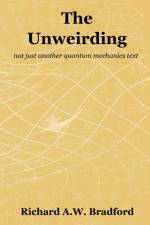- not just another quantum mechanics text
von Richard Bradford
52,00 €
This is not another quantum mechanics text on conventional lines. Most topics covered in undergraduate quantum physics courses are notable for their absence. Instead this book concentrates upon understanding the intriguing conceptual issues raised by quantum mechanics. It is neither a book for experts nor a "popular physics" book. It is intended for the serious student, but at undergraduate or early postgraduate level. The aim is to demystify ("unweird") quantum mechanics by analysing the many conundrums it presents in terms of the theory's own language, namely Hilbert space algebra. It should be regarded as complementary to standard treatments, not a replacement for them. A rapid reprise of the Hilbert space formalism of quantum mechanics is first presented and then applied to a wide range of topics including, (a) the reason why "which path" information destroys interference, (b) the reason why quantum states cannot be non-destructively copied, (c) what the uniquely quantum "observability of counterfactuals" means, (d) why constantly monitoring a pure quantum state can prohibit its evolution, (e) analyses of interference experiments involving entangled particles and so-called "delayed choice", "quantum erasure" and "delayed erasure" interference, (f) the quantum formulation of entropy, (g) the definition and quantification of entanglement in both pure and mixed quantum states, (h) the two convincing arguments against "hidden variables" in quantum mechanics, and hence the irreducibly indeterministic nature of quantum measurement, (i) what is meant by decoherence and how it can be quantified, (j) why big things tend not to be "quantum mechanical" - and why they sometimes are, and more often than you think, (k) a brief taster for quantum communication and quantum cryptography, and (l) quantum teleportation: what it is and what it isn't. Traditional topics are not ignored entirely. The book includes a rather idiosyncratic treatment of symmetry and conservation laws, the uncertainty principle, and a detailed chapter on algebraic methods in Hilbert space with which all physics students of a theoretical bent should be familiar. In particular the book places great emphasis from the start on appreciating the distinction between pure quantum states and mixed states, which avoids unnecessary confusion. By the end the reader should have a sensible, physicists', perspective on Schrodinger's cat and understand what exactly is meant by being able to extract the result of a quantum computer's computation without turning it on.


